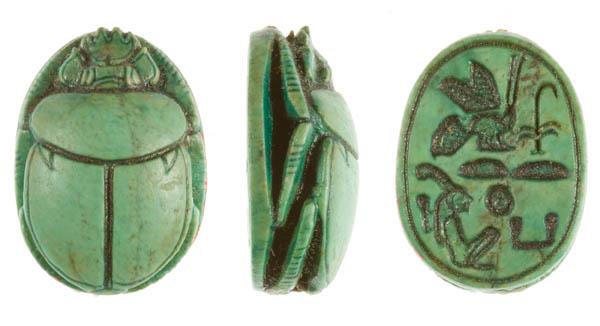Image Details

COURTESY OF THE METROPOLITAN MUSEUM OF ART; ROGERS FUND, 1927
EGYPTIAN SCARABS originally served amuletic purposes, but beginning in Dynasty 11 (21st century B.C.E.) they started to be employed as seals to authenticate documents and to seal goods. Found in a foundation deposit of Queen Hatshepsut’s funerary temple at Deir el-Bahri, in Western Thebes, this scarab bears the name and titles of “the King of Upper and Lower Egypt, Maat-ka-re [Hatshepsut].” It is made of steatite and dates to the early Dynasty 18 (c. 1479–1458 B.C.E.).
